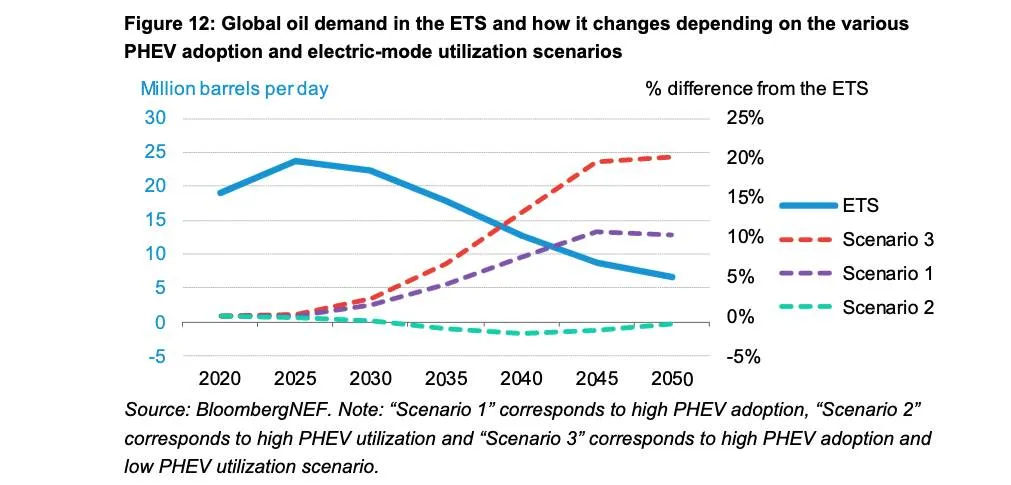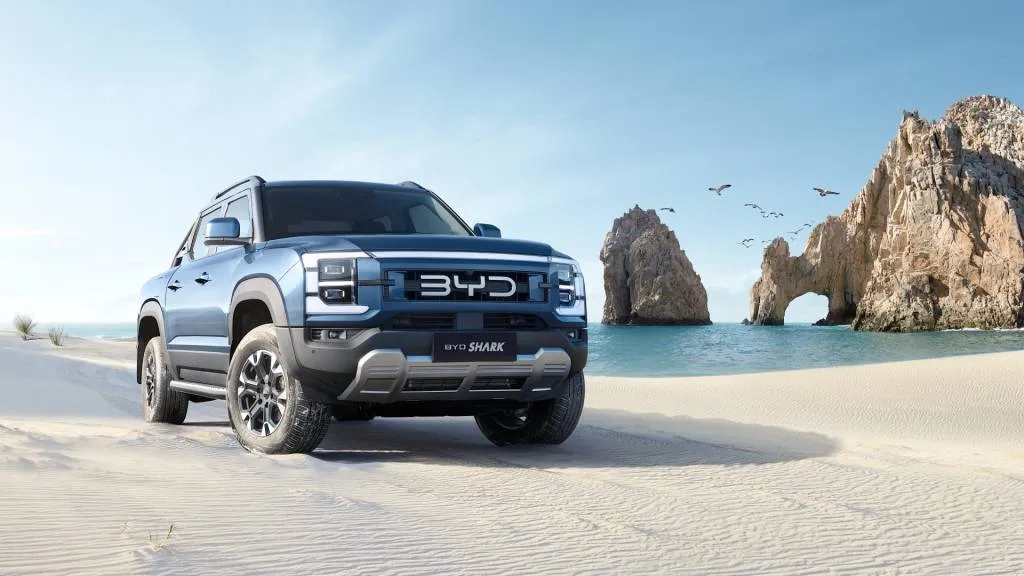

The global fleet of internal-combustion vehicles will peak in 2025, but plug-in hybrids may determine whether this leads to decreased oil demand, according to new analysis from Bloomberg New Energy Finance (BNEF).
Sales of internal-combustion vehicles already peaked in 2017, and BNEF expects them to be 29% below that peak in 2027. While BNEF still expects EVs to be “the primary method of decarbonizing road transport,” right now sales are slowing in established markets while plug-in hybrids are “making a comeback,” analysts note.
Electric range for plug-in hybrids is also increasing, averaging 80 kilometers (49.7 miles) in 2023, but the share of kilometers driven in electric mode is around 11% to 54% of total distances driven, depending on the country and owner type, analysts found.

Plug-in hybrid electric mode usage and global oil demand (via BNEF)
“If PHEVs are displacing BEV sales and are not utilizing their full electric driving potential, they add to oil demand in our analysis,” BNEF noted. In the U.S., the EPA has potentially given them a pass with new regulations, and it’s unclear how often drivers will truly plug in.
Meanwhile, EV markets are not traveling at the same speed, according to the analysis. Some markets the U.S., Germany, and Italy have seen slowing sales, and automakers—such as Mercedes-Benz—have softened EV targets. But markets like China, India, and France are still seeing “healthy growth.”
EV sales are also still growing on a global level, helped by expansion in developing economies. Thailand, India, Turkey, Brazil and others are seeing record EV sales thanks to an influx of low-cost models targeted at local buyers, according to BNEF, which adds that much of this product comes from Chinese manufacturers eager to find new markets.

BYD Shark plug-in hybrid pickup
BNEF points out that dropping battery prices are mostly a good thing for the EV market. As Goldman Sachs noted earlier this year, a 40% drop in battery sales will help EVs reach cost parity with internal combustion as soon as next year in some segments of the market, without subsidies. And increasing use of LFP battery cells will decrease demand for nickel and manganese, further improving the economic and environmental picture for EVs, BNEF noted.
Another point made by this analysis is that EV sales and fleet turnover are very different things. BNEF estimates that, even with rapid EV adoption, less than 50% of of the global passenger-vehicle fleet will be electric at this rate. In the U.S. and abroad, it begs the question as to whether regulators are focusing too much on EV sales and not enough on retiring internal-combustion vehicles.

Source link
#plugin #hybrids #plugged #add #oil #demand




